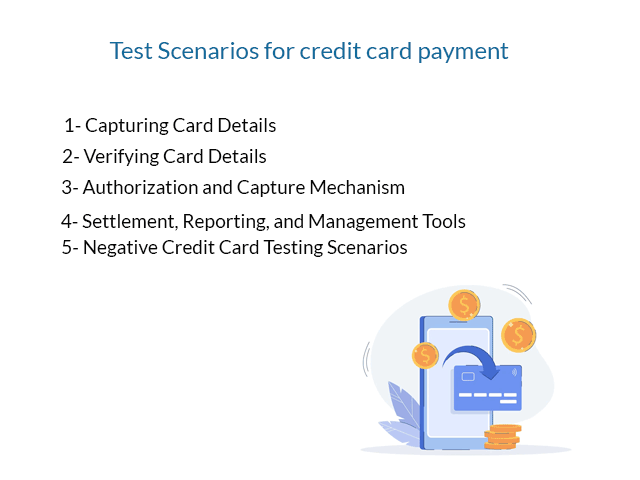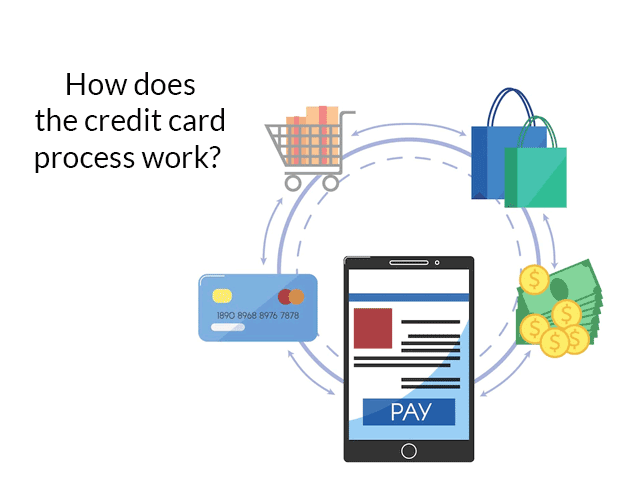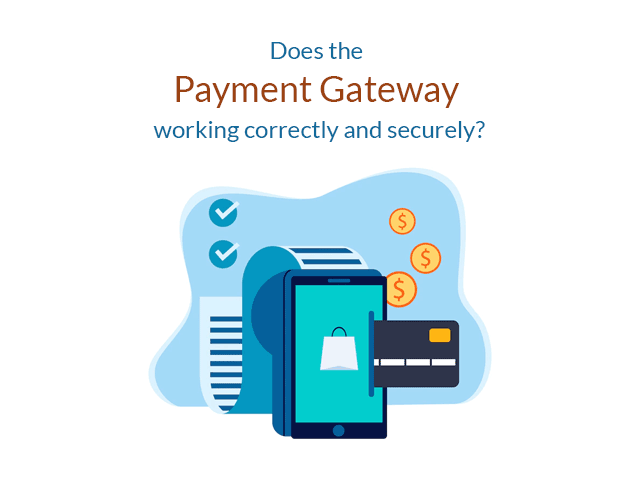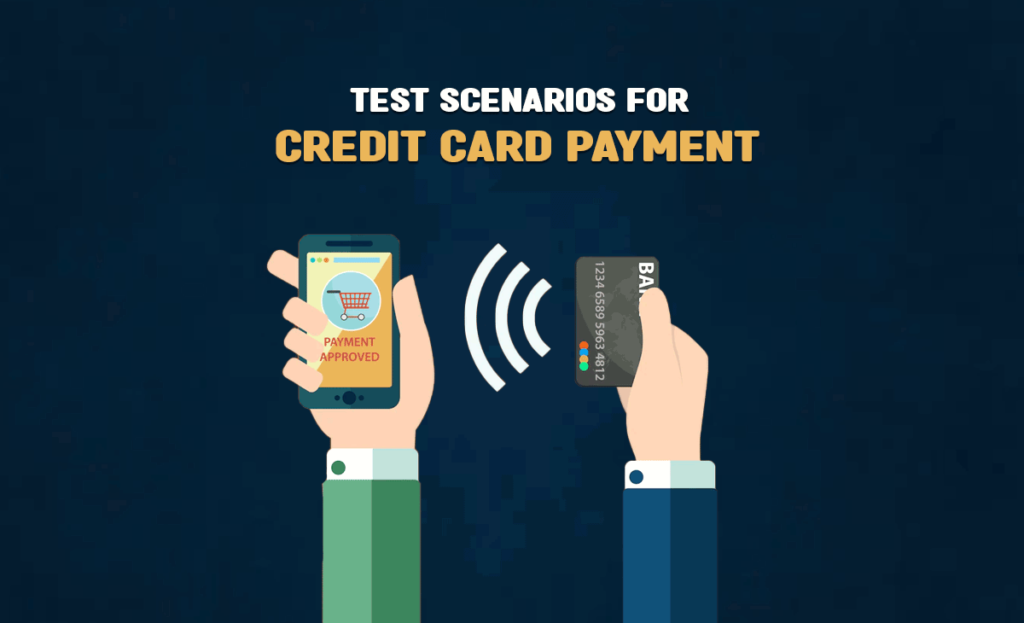Credit card payments are among the most common ways to pay for goods and services. As a QA tester, it is essential to test different scenarios related to credit card payments to ensure they work correctly and securely.
This article will explore some of the most common test scenarios for credit card payments, including whether you can make a payment online or in person and what verification steps you may need to complete.
Want to learn and finish your application’s next test case in a robust TCMS? Create your free AccelaTest Test Case Management Account and follow along simultaneously.
Example CC Payment Business Requirements
Having sample business requirements for our example credit card payment scenario is important to ensure all the test scenarios have common elements, such as:
- Verify user must enter valid credit card details, such as card number, expiry date, and CVV code.
- Verify user must enter the name of the credit card holder precisely as it appears on the card.
- Verify an authorization code is provided after payment is made successfully.
- Verify user must enter a valid billing address and postal code.
15 test scenarios to validate credit card payment gateways
Some test scenarios to consider when validating credit card payment gateways are:
- Validate card numbers must be 16 digits long. Shorter entries and longer entries shall throw an error.
- Verify the card type (Visa, Mastercard, Discover)by checking the starting digits of the card.
- Validate address details, especially the postal code inputs accept the right format, for online purchases.
- Check that the expiration date is valid and not expired or unrealistically into the future.
- Test to verify the system detects errors related to incorrect data in the card details fields using a checksum.
- Test to check the processing of successful and declined transactions.
- Validate the system’s ability to process payments with different currencies.
- Test to validate that correctly entered card details are accepted by the payment gateway
- Test to validate that system can capture transaction status in appropriate reports, such as record keeping and auditing.
- Validate the payment gateway to connect with different external APIs for authorization, verification, and fraud avoidance.
- Verify the payment gateway can support different credit cards and payment methods, such as e-wallets, mobile payments, and digital wallets.
- Validate the system can detect duplicate payments and process refunds.
- Verify the payment gateway returns error messages in a format that can be understood by customers.
- Validate the payment gateway is compliant with industry standards and regulations, such as not storing the CVV.
- Ensure other negative scenarios include processing issues such as declined transactions, insufficient funds, or security concerns such as breaches or unauthorized access.
Test Cases for credit card payment
The above test scenarios can be divided into four main test case buckets: capturing card details, verifying card details, and transaction settlement, which we go into more detail here.


Capturing Card Details
One key step in testing a credit card payment gateway is capturing customer card details. This may involve collecting information such as card number, expiration date, and security code to process the payment. You will want to:
Verifying Card Details
In addition to capturing card details, you must verify they are valid and will be accepted. It may involve checking for any errors or issues with the card details. It may also include confirming that the customer has sufficient funds in their account to make the payment.
Authorization and Capture Mechanism
Another critical step is verifying card details to ensure the transaction was successfully processed. It may involve checking the transaction details or payment, such as card type, amount authorized, and status.
Several factors can affect its success, including transaction limits and processing fees. Additionally, ensuring that your transaction processing is secure and compliant with industry standards is crucial.
Settlement, Reporting, and Management Tools
Ensuring accuracy is key when dealing with credit card payments. Therefore, credit card payments should also be tested for settlement, reporting, and management tools. It may include transaction tracking, reconciliation capabilities, and status or notification alerts. In addition, it’s essential to test reprinting receipts for closed transactions, void any payments before posting, and verify all information by checking the reports – including even minor adjustments made in past checks.
How does the credit card process work?


The test scenarios for credit card payment will help you understand the process. Also, it will allow you to make online purchases or pay your bills online confidently.
At the core of any credit card payment is the authorization process. It involves submitting the necessary information to the payment processor, such as your credit card number and CVV code. The processor then validates your payment information and determines if you have sufficient funds to cover the transaction.
Once authorization is received, the payment is typically processed immediately. However, some payments may require additional steps before finalizing them. For example, your bank may place a hold on a large purchase or require you to enter additional verification codes before completing the payment.
If you make an online purchase, you may also need to provide additional information, such as your billing or shipping address. It helps ensure that a legitimate merchant makes the payment and the correct recipient receives the funds.
At any point during the credit card payment process, there may be delays or errors that can impact the status of your transaction. For questions about your payment status, contact your credit card company immediately. With careful planning and attention to detail, you can easily make online purchases or pay your bills.
Prerequisites to Test Payment Gateway
You may need to meet several prerequisites to test a payment gateway. These include having the appropriate technical skills, experience, and access to testing tools or resources. You may also need a merchant account or payment processing service to ensure the correct handling of all transactions.
If you are new to this, start with some basic tutorials or guides that can help you get familiar with the process. Additionally, many tools and resources can automate or simplify some of the tasks involved in testing a payment gateway. These tools include an automated testing platform and reporting tools.
Whatever your circumstances or experience level, working with a payment gateway is essential to any e-commerce business. Understanding the key features, processes, and prerequisites can help ensure your transactions are processed smoothly and securely.
What is Payment Gateway Testing?


Payment gateway testing verifies that a payment gateway is working correctly and securely. It typically involves confirming that payments are being processed correctly and that sensitive data such as credit card numbers or personal information is handled securely.
To perform this type of testing, you will typically need to create test accounts and payment forms and submit various types of transactions using different payment methods. In addition, it may include testing for declines or errors and verifying the accuracy of reporting and tracking the transactions.
While it can be complex, many tools and resources can assist you. For example, many payment gateways include built-in testing platforms and documentation to help guide you through the process. Additionally, there are third-party testing services and tools that can help by automating some of the tasks involved.
Suppose you are responsible for payment gateway testing. In that case, you should work closely with your payment processor or bank to ensure that all transactions are processed correctly. It will help minimize potential issues or errors and help keep your business running smoothly.
Whether you are making online purchases or paying bills, using a credit card to make payments can be a convenient and secure way to manage your finances.
Types of Payment Gateway Systems
Hosted Payment Gateway
This is a third-party service that allows businesses to process payments online. It typically involves integrating your website or application with the payment gateway service, which typically handles all transaction processing and security. Depending on the provider, you may also have access to additional features and tools, such as e-commerce platforms or payment reporting.
Self-hosted Payment Gateway
With a self-hosted payment gateway, you have the power to process payments right on your server. This helpful software application puts control of online transactions in your hands. This may involve creating custom payment forms or API integrations with other software or applications.
This method is more convenient because it will not direct you to the gateway link during the payment process. The customers do not leave the eCommerce site when processing payments.
When choosing a payment gateway system for your business, you should consider the features and functionality offered by each one. Some key factors include processing fees, transaction limits, and security features. Additionally, look for a provider that offers support, such as online documentation and troubleshooting tools.
Conclusion
Testing credit card payments is essential to ensure that customers can purchase items quickly and smoothly. Test scenarios should be created in a Test Case Management System, such as our FREE AccelaTest for valid, invalid, declined, and reversed transactions. In addition, it’s essential to check the entire process, from entering card details to verifying the transaction confirmation. Test scenarios should also be designed to cover different payment types, such as debit cards and PayPal. Finally, use realistic test data to ensure your tests are thorough and effective. By following these steps, you can ensure that your credit card payment system runs smoothly without any problems.

